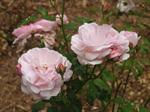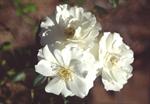 Explore Your Passion for Roses
Explore Your Passion for Roses
- Start a business, expand your hobby, get a job
- For amateurs or professionals
Roses are most commonly grown as a landscape plant, or for cut flowers; but they can be used for other things as well.
- Parts of a rose are edible- rose hips are used in jams, jellies and as a rich course of vitamin C.
- Parts of a rose are scented- used for perfumes, oils, rose water for cooking, petals flavouring for cakes, desserts, drinks and as a colourful garnish/ decoration.
- Parts of a rose have medicinal properties-rose oil for skin complaints, source of vitamin C, relaxing calmative oil for infusions and massage
COURSE STRUCTURE
 There are eight lessons as follows:
There are eight lessons as follows:
- Introduction
- Culture
- Propagation
- Hybrid Teas & Floribundas
- Old world, species and lesser known varieties.
- Climbers, Miniatures, Standards & Weepers
- Making the Best Use of these Plants
- Growing A Commercial Rose Crop

AIMS
- Distinguish between characteristic plant features in order to identify different types of roses.
- Determine cultural practices for growing roses in different situations.
- Perform all operations associated with pruning roses.
- Distinguish between the culture of different types of roses, including hybrid teas, floribundas and species rose groups.
- Plan the establishment of a rose garden.
- Plan the production of a commercial rose crop.
WHAT THE COURSE COVERS
.jpg) You will learn a wide variety of things, through a combination of reading, interacting with tutors, undertaking research and practical tasks, and watching videos. Here are just some of the things you will be doing:
You will learn a wide variety of things, through a combination of reading, interacting with tutors, undertaking research and practical tasks, and watching videos. Here are just some of the things you will be doing: